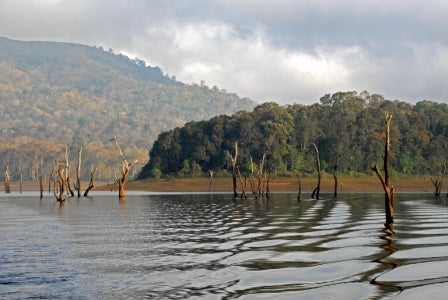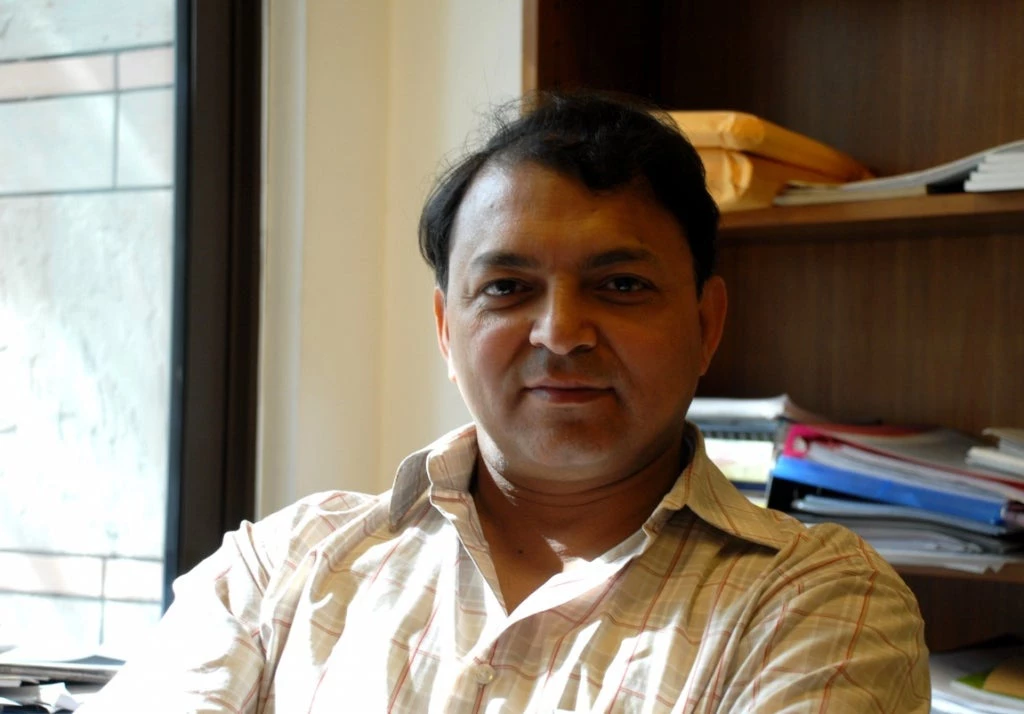 It was getting dark and the mist engulfing the jungle made the challenge of spotting the stripes even harder. My guide, a trained local tribal youth, was excited and kept telling stories about the sights and sounds of the jungle. In all fairness, I had enjoyed the trek. Every turn or straight path presented a beautiful landscape, majestic trees, bamboo thickets, gurgling streams, colorful birds, distant animal calls and the gentle fresh breeze. Sighting a tiger would only complete the experience. Will we? Won’t we, see one?
It was getting dark and the mist engulfing the jungle made the challenge of spotting the stripes even harder. My guide, a trained local tribal youth, was excited and kept telling stories about the sights and sounds of the jungle. In all fairness, I had enjoyed the trek. Every turn or straight path presented a beautiful landscape, majestic trees, bamboo thickets, gurgling streams, colorful birds, distant animal calls and the gentle fresh breeze. Sighting a tiger would only complete the experience. Will we? Won’t we, see one?
In many ways, the experience of sighting a tiger reflects the challenge its very survival is facing! Will it? Won’t it, survive? But more importantly, will someone notice if it is not around? Fortunately, I was in Periyar Tiger Reserve in the southern Indian State of Kerala, a turnaround success story where the World Bank’s India Ecodevelopment Project significantly increased income opportunities for the locals, improved reserve management and encouraged community participation in co-managing the reserve. Though this happened a decade ago, even today the incomes are sustained and communities are closely engaged! But such success stories are few and far between.
When conservation and people benefit each other
Periyar is a success story where conservation benefit people. It was the threat of tiger extinction that led to the implementation of the India Ecodevelopment Project. The project helped people escape debt, invested in people’s participation in co-management, trained local tribal people as nature guides by building on their knowledge of the forests and wildlife, supported community led ecotourism initiatives and federated community groups to manage religious tourism. The results were spectacular and can be witnessed even today. The community based ecotourism income increased from about US$ 10,000 (in 2004-05) to US$ 350,000 (2012-13) at current prices. Gains at the close of the project were captured in the Implementation Completion Report. This is one of the few parks where visitors can trek inside with local tribal guides! Thanks to the Trekkers Ecodevelopment Committee set under the project. Others can use boats for wildlife viewing!
The parallel tracks of conservation and development
To me this experience shows that conservation can lift the extreme poor out of poverty. It can create jobs, ensure long-term supply of water and clean air, sequester carbon, save billions of dollars in maintaining soil productivity and pollinating crops etc. All these services are essential ingredients for long-term economic growth and wellbeing of the environment. Yet, there are few takers, as tiger conservation has also emerged as a stumbling block to rapid infrastructure development. It is difficult to build roads through tiger reserves, precious minerals lying under tiger forests cannot be extracted and industries and other infrastructure faces hurdles within a stipulated distance from tiger reserves, to name a few challenges. Proponent of tiger conservation and those for rapid economic growth, therefore have diverging views of economic development. This debate has raged in India where the priority of the Government is to ensure a healthy rate of economic growth and therefore has seen diversion of forestland to accommodate large infrastructure projects.
What next?
It is time to dispel the notion that conservation and development are mutually exclusive. The conservation community needs to further translate the economic potential of tiger and other wildlife conservation into policies and investment opportunities. The data and current literature don’t even provide true estimates of the income derived from biodiversity making it difficult to assess the extent and relationship of the dependence of extreme poor on natural resources. It is time that the conservation community accepts the challenge of identifying, developing and scaling up conservation as an approach for economic development.
The good news is that there is work in progress
A good part of global tourism is centering on nature based tourism and this trend is only growing. This presents a great opportunity to create green jobs. The share of global employment in travel and tourism is greater than that for the auto and chemicals manufacturing industries combined, across every region of the world. In India alone, the tourism sector contributed 6.6% to its GDP in 2012 and supported 39.5 million jobs (7.7% of total employment). The Periyar model of conservation based tourism needs replication and scaling up. There are other groups working to make conservation work for development. “Conservation Is Development” – was aptly emphasized by our development partner USAID in their recently launched Biodiversity Policy. The Global Tiger Initiative for example, has been promoting a Smart Green Infrastructure approach to balance the conservation-development. The Economics of Environment and Biodiversity (TEEB), a global initiative to help decision-makers recognize, demonstrate and capture the values of ecosystem services and biodiversity is telling us that conserving forests avoids greenhouse gas emissions worth US$ 3.7 trillion and green product and services presents a new market opportunity. The global sale of organic foods and drinks touched US$ 47 billion in 2007 and is growing by US$ 5 billion per year. The World Bank’s WAVES initiative strives to bring natural capital into national systems of accounting, expanding the scope of GDP. All these are helping developing a business case to convince decision makers to also invest in conservation.
My trek came to an end without seeing the tiger but the thrill of the walk inside the jungle made me feel the wild nature at every step. My resolve to continue to explore options of making conservation work for development only got stronger. Since nature and its bounty are shared across income groups, ethnic identities and generations, conservation can lead to poverty eradication and shared prosperity – the two goals of the World Bank.


Join the Conversation